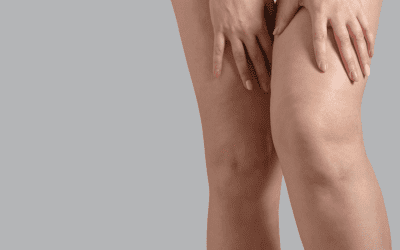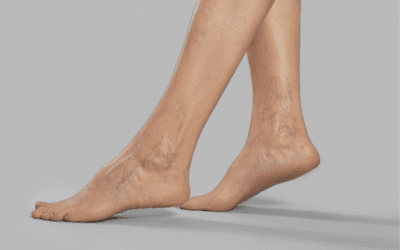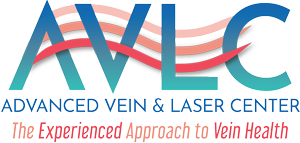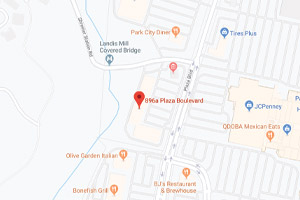| Compression therapy is a valuable tool in post-surgery recovery, offering numerous benefits for patients. By reducing swelling, improving blood circulation, enhancing lymphatic drainage, and promoting healing, compression garments contribute to a smoother and more comfortable recovery experience. Consult Advanced Vein & Laser Center for your vein health needs & to determine the most suitable approach |
Post-surgery recovery is a critical phase that requires proper care and support to ensure optimal healing and a smooth transition back to normal activities. One effective method that has gained popularity in aiding the recovery process is compression therapy.
In this blog post, we will discuss the role of compression therapy in post-surgery recovery, highlighting its benefits and best practices for effective healing & improved blood circulation.
What is Compression Therapy?
Compression therapy is a non-invasive treatment approach that involves wearing specially designed garments or stockings to apply controlled pressure to the affected limbs, usually the legs.
It is commonly used to manage and improve various conditions related to circulation, such as venous insufficiency, lymphedema, and deep vein thrombosis (DVT).
Compression garments are typically made of elastic materials that provide graduated pressure, meaning the pressure is highest at the ankle and gradually decreases as it moves up the leg.
The compression helps promote better blood flow by supporting the veins and muscles, reducing venous pressure, and preventing blood from pooling or stagnating in the lower limbs.
There are different types of compression garments available, including:
- Compression stockings
- Compression Socks
- Sleeves
- Bandages
The specific type and pressure level of the compression garment will depend on the individual’s condition and the recommendation of a healthcare professional.
What Are The Benefits Of Compression Therapy?
The Benefits of compression therapy may include:
- Improved Circulation: Compression garments help squeeze the veins and promote blood flow back to the heart, reducing venous congestion and preventing blood pooling in the lower limbs. This can alleviate symptoms such as swelling, pain, and discomfort.
- Reduced Edema: Compression therapy can help reduce swelling (edema) in the legs or affected areas by assisting the movement of excess fluid from the tissues back into the circulatory system.
- Prevention of Blood Clots: Compression stockings are often used as a preventive measure against deep vein thrombosis (DVT) in individuals at risk, such as those who have undergone surgery or have limited mobility. The compression helps prevent blood from pooling and reduces the risk of clot formation.
- Management of Varicose Veins: Compression garments can provide relief and help manage symptoms associated with varicose veins, such as pain, achiness, and swelling. They can also help prevent the progression of the condition and the development of complications.
- Support for Lymphedema: Compression therapy is a key component in the management of lymphedema, a condition characterized by the accumulation of lymphatic fluid and swelling. The compression garments help improve lymphatic flow and reduce swelling.
It is important to note that compression therapy should be used under the guidance of a healthcare professional, as the pressure level and type of compression garment should be tailored to the individual’s specific needs and condition. Proper fitting and regular wear of the compression garments are crucial for optimal effectiveness.
How Does Compression Therapy Support Healing?
Compression Therapy supports healing in the following ways:
- Reducing Swelling and Edema: After surgery, swelling and edema are common occurrences as the body responds to trauma and inflammation. Compression therapy can help minimize swelling by exerting pressure on the affected area, which helps prevent the accumulation of excess fluid. By reducing swelling and edema, compression garments provide comfort, facilitate the removal of metabolic waste, and promote the healing process.
- Improving Blood Circulation: Proper blood circulation is crucial for healing and the delivery of essential nutrients and oxygen to the affected tissues. Compression therapy aids in improving blood circulation by assisting the veins in returning blood to the heart more efficiently. The gentle pressure applied by compression garments helps prevent blood from pooling in the extremities, reducing the risk of blood clots and enhancing overall circulation. Improved blood flow promotes tissue oxygenation, which is vital for proper healing and recovery.
- Enhancing Lymphatic Drainage: The lymphatic system plays a vital role in the body’s immune response and fluid balance. Compression therapy can help stimulate lymphatic drainage by assisting the movement of lymph fluid. By promoting efficient lymphatic drainage, compression garments help reduce the risk of lymphedema and facilitate the removal of waste products from the surgical site, supporting the healing process.
- Promoting Healing and Tissue Regeneration: Compression therapy creates a controlled environment that promotes optimal conditions for healing and tissue regeneration. The gentle pressure exerted by compression garments supports the alignment of collagen fibers and helps reduce scar tissue formation. It also provides stability and support to the surrounding tissues, minimizing the risk of complications during the healing process.
Additionally, compression therapy can help alleviate discomfort and pain associated with surgery, contributing to an improved overall recovery experience.
What Are The Best Practices for Compression Therapy?
To ensure the effectiveness and safety of compression therapy during post-surgery recovery, it is essential to follow these best practices:
- Consult with Advanced Vein & Laser Center: Before starting compression therapy, consult with your vein doctor to determine the appropriate compression level, garment type, and duration of use based on your specific needs and surgical procedure.
- Proper Fit: Ensure that the compression garment fits properly, providing the right amount of pressure without causing discomfort or constriction. Ill-fitting garments may hinder circulation or cause unnecessary pressure points.
- Graduated Compression: Opt for graduated compression garments that provide higher pressure at the extremities and gradually decrease towards the core. This design promotes optimal blood flow and lymphatic drainage.
- Consistency: Follow the recommended wearing schedule provided by your vein doctor. Consistent use of compression garments, as advised, can optimize the benefits and support effective healing.
- Hygiene and Care: Maintain proper hygiene by regularly washing the compression garments according to the manufacturer’s instructions. Clean garments help prevent skin irritation and maintain their compressive properties.
With proper guidance and adherence to best practices, compression therapy can significantly aid in your healing journey.
Seek Treatment From The Leading Vein Specialists in York & Lancaster, PA.
At every stage of your vein issues, it’s important to see a professional to help you in healing vein disease and achieve a life of normalcy and physical comfort through compression therapy.
Not only can they help you finally heal this condition, but they can also treat the vein issues that caused them in the first place. Visit one of our centers for an in-depth appointment – put your vein troubles to rest.
Ready to book your appointment? Give us a call today.

Dr. Steven Heird, MD, is a distinguished specialist in the treatment of venous disease and vascular surgery. As one of the dedicated doctors at the Advanced Vein and Laser Center, located in York and Lancaster, Pennsylvania, Dr. Heird has made a significant impact in the field of vein care. His expertise and commitment to patient well-being have earned him a trusted reputation among his peers and patients. Dr. Heird’s work at the Advanced Vein and Laser Center reflects his passion for providing compassionate and effective vein care, improving the lives of those he serves with precision and care.








0 Comments